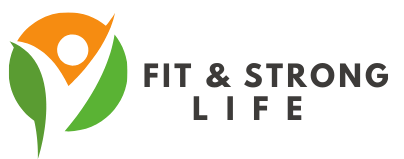Welcome to your go-to guide on recovery strategies! Whether you’re an athlete, a fitness enthusiast, or someone looking to maintain a healthy lifestyle, understanding how to recover effectively is crucial for preventing injuries. In this article, we’ll explore the top seven recovery strategies that can help you stay in peak condition. Let’s dive right in!
Table of Contents
- Active Recovery
- Hydration
- Nutrition
- Sleep
- Stretching and Flexibility
- Foam Rolling and Self-Massage
- Cold and Heat Therapy
1. Active Recovery
Active recovery involves engaging in low-intensity exercise following strenuous workouts. This can include activities like walking, light cycling, or yoga. The goal is to promote blood flow to the muscles, which helps in reducing stiffness and soreness.
Why It Works:
- Improves Circulation: By keeping the body moving, you enhance circulation, aiding in nutrient delivery to muscles.
- Reduces Lactic Acid: Low-intensity activities help clear lactic acid from your system, minimizing muscle fatigue.
How to Implement:
- Schedule active recovery days following high-intensity workouts.
- Consider incorporating activities like swimming or cycling at a leisurely pace.
“Active recovery isn’t just a break; it’s an opportunity to keep your body engaged and on the path to optimal performance.”
2. Hydration
Staying well-hydrated is crucial for muscle recovery and overall health. Dehydration can lead to muscle cramps and fatigue, increasing the risk of injury.
For more on hydration, check out our article on 10 Hydration Strategies to Boost Fitness Performance.
Tips for Staying Hydrated:
- Drink Water Regularly: Aim to drink water throughout the day, not just during workouts.
- Electrolyte Balance: Consider beverages that replenish electrolytes, especially after intense workouts.
Hydration Goals:
| Activity Level | Water Intake (per day) |
|---|---|
| Sedentary | 2.7 liters (women) |
| 3.7 liters (men) | |
| Moderate Exercise | +1.5-2 liters |
| Intense Exercise | +2-3 liters |
For more detailed hydration guidance, refer to the CDC’s hydration guidelines.
“Hydration is the foundation of recovery; without it, all your hard work may go to waste.”
3. Nutrition
Proper nutrition plays a vital role in recovery. Eating a balanced diet rich in carbohydrates, proteins, and healthy fats can aid muscle repair and replenish energy stores.
For insights on optimizing your nutrition, explore our article on Top 10 Essential Vitamins and Minerals for Fitness Gains.
Key Nutrients for Recovery:
- Proteins: Essential for muscle repair. Include sources like chicken, fish, beans, and legumes.
- Carbohydrates: Important for replenishing glycogen stores. Opt for whole grains, fruits, and vegetables.
- Healthy Fats: Avocados, nuts, and olive oil help reduce inflammation.
Post-Workout Meal Ideas:
- Grilled chicken with quinoa and steamed vegetables.
- Greek yogurt with berries and a drizzle of honey.
For more on post-workout nutrition, check out our article on Top 7 Post-Workout Nutrition Tips for Optimal Recovery.
“Think of your body as a car; without the right fuel, it can’t perform at its best.”
4. Sleep
Sleep is often the unsung hero of recovery. During sleep, your body repairs itself, making it essential for muscle recovery and immune function.
Sleep Tips:
- Aim for 7-9 hours: Prioritize quality sleep to enhance recovery.
- Create a Sleep Routine: Go to bed and wake up at the same time each day to regulate your body clock.
The Impact of Sleep on Recovery:
- Improved muscle repair.
- Enhanced cognitive function and mood.
For better sleep hygiene tips, visit the Sleep Foundation.
“Sleep is the ultimate recovery tool; neglect it at your own peril.”
5. Stretching and Flexibility
Incorporating stretching into your routine can greatly enhance flexibility and reduce the risk of injuries. Stretching helps to lengthen muscles and improve range of motion.
For effective stretching techniques, see our article on 10 Essential Stretching Techniques for Injury Prevention.
Types of Stretching:
- Static Stretching: Holding a stretch for 15-30 seconds post-workout.
- Dynamic Stretching: Moving through a range of motion before workouts, such as leg swings and arm circles.
Benefits of Stretching:
- Reduces muscle stiffness.
- Improves overall athletic performance.
“Stretching is not just a warm-up; it’s a critical step in your recovery journey.”
6. Foam Rolling and Self-Massage
Foam rolling is a form of self-myofascial release that helps alleviate muscle tightness and improve recovery. It’s like giving yourself a massage, and it’s highly beneficial for muscle recovery.
To learn more about effective foam rolling techniques, check out our article on 10 Essential Tips for Proper Form to Prevent Injuries.
How to Foam Roll:
- Focus on major muscle groups such as quads, hamstrings, and back.
- Roll slowly over tight areas, spending extra time on sore spots.
Benefits of Foam Rolling:
- Increases blood flow.
- Reduces muscle soreness after workouts.
“Foam rolling is your body’s way of thanking you for the effort you put in during workouts.”
7. Cold and Heat Therapy
Utilizing cold and heat therapy can significantly aid recovery and pain relief. Both methods have unique benefits.
Cold Therapy:
- Reduces inflammation and numbs soreness. Ideal for use after intense workouts or injuries.
Heat Therapy:
- Promotes blood flow and relaxes tight muscles. Great to use before workouts or to relieve muscle tension.
How to Use:
- For cold therapy, apply ice packs for 15-20 minutes.
- For heat therapy, use heating pads or warm towels for 15-20 minutes.
Learn more about cold and heat therapy from Mayo Clinic.
“Cold and heat therapy are two sides of the same coin; each plays a crucial role in your recovery arsenal.”
FAQs
Q: How often should I incorporate active recovery?
A: Aim for at least one active recovery day per week, depending on your workout intensity.
Q: What should I eat after a workout?
A: Focus on a combination of protein and carbohydrates, such as a protein shake with a banana or a turkey sandwich.
Q: How can I improve my sleep quality?
A: Establish a bedtime routine, limit screen time before bed, and create a comfortable sleep environment.
By incorporating these top seven recovery strategies into your routine, you can effectively prevent injuries and enhance your overall performance. Remember that listening to your body and adjusting your recovery methods accordingly is key to long-term success. Happy recovering!



